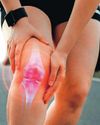
Dr Nitin Sardana is senior consultant, minimally invasive and general surgery at Marengo Asia Hospitals, Faridabad. His area of special interest is complex cases needing laser interventions. When not being a doctor, he enjoys long drives and playing outdoor sports with his son.
What is minimally invasive surgery? These are surgeries which are performed with small cuts (5mm-10mm) over the abdomen or chest. There are usually three or four cuts depending on the type of surgery or disease for which they are being performed. For some surgeries, like gallbladder or colon surgery, a single hole or cut is used. These are called SILS Single Incision Laparoscopic Surgery.
Minimally invasive versus laparoscopic surgery: Minimally invasive surgery is an umbrella term for surgeries where there is little damage to the tissue because of the small hole. Laparoscopic surgeries are a type of minimally invasive surgery. Other minimally invasive surgeries are VATS (Video Assisted Thoracic Surgery) and LASER procedures carried out for piles, fistula and pilonidal sinus. Robotic surgeries are also a kind of minimally invasive surgery.
The benefits: There is minimal blood loss and less chance of wound infection. The postoperative pain and hospitalisation period are minimal, and the patient can return to his normal routine soon. And small cuts mean smaller scars. Often these surgeries can be performed as day care procedures.
This story is from the December 01, 2024 edition of THE WEEK India.
Start your 7-day Magzter GOLD free trial to access thousands of curated premium stories, and 9,000+ magazines and newspapers.
Already a subscriber ? Sign In
This story is from the December 01, 2024 edition of THE WEEK India.
Start your 7-day Magzter GOLD free trial to access thousands of curated premium stories, and 9,000+ magazines and newspapers.
Already a subscriber? Sign In

Walking in pine forest can have the same effect as a prescription drug
INTERVIEW - KATHY WILLIS, professor of biodiversity, the University of Oxford, and author, Good Nature

MORE THAN A HELPING HAND
Maria Victoria Juan spent a lifetime healing wounded soldiers, and she can't think of anything she could have done better

Against all odds
Mohamed Raishan Ahmed was born with spinal muscular atrophy, which made him unable to sit, stand or walk. Recently, the Maldivian underwent a rare, complex surgery in India that now allows him to sit upright. At 23, the fact that he is alive is in itself an achievement. But he has gone beyond mere survival-with a pursuit of excellence

A pacemaker tale
From science fiction to reality, with a touch of southern Indian wisdom

Driving safe
Taxi drivers endure gruelling hours, cramped seats and relentless traffic, making them prime candidates for health issues like back pain, hypertension, diabetes and insomnia.

Good food, good life
From the moment of birth, we establish a relationship with food—a nourishing link that requires care and attention to stay healthy

POOR SLEEP IN MIDLIFE COULD AGE YOUR BRAIN FASTER
PEOPLE WHO EXPERIENCE SLEEP ISSUES, such as difficulty falling asleep or staying asleep in their 40s, may show more signs of brain ageing in late midlife. Poor sleep may accelerate brain atrophy that is associated with dementia.

BRAIN SCANS SHOW MINDFULNESS MEDITATION CAN REDUCE PAIN
CAN MINDFULNESS MEDITATION actually relieve pain, or is it just a placebo effect?

NON-SURGICAL OPTION TO EASE KNEE ARTHRITIS
A NEW, MINIMALLY INVASIVE procedure called genicular artery embolisation (GAE) can effectively reduce pain, improve quality of life and reduce progression of the disease and the need for knee replacement surgery in people with knee osteoarthritis.

EARLY ONSET DIABETES, BELLY FAT LINKED TO DEMENTIA
FACTORS SUCH AS DIABETES and belly fat in midlife can put you at risk of dementia and Alzheimer's disease later in life.